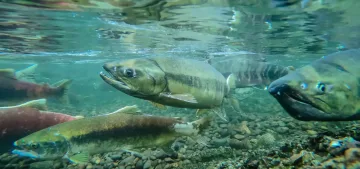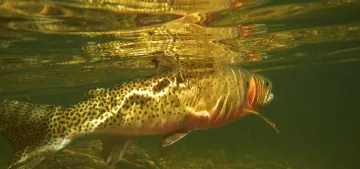Introduction: The integration of technology has revolutionized the field of fisheries biology, enabling researchers to conduct more precise and less invasive studies. This blog post will explore the various technological tools that have become indispensable in fisheries research, highlighting how they enhance data collection, analysis, and overall research efficiency.
Advanced Tools and Technologies:
- Remote Sensing and GIS:
- Remote sensing technology allows for the large-scale observation of aquatic environments, helping researchers track changes in habitat, water quality, and vegetation over time.
- Geographic Information Systems (GIS) are used to analyze spatial and geographic data, providing crucial insights into fish populations and their habitats.
- Telemetry and Tracking Systems:
- Telemetry devices transmit data about an animal’s location and behavior in real time. This technology is essential for studying migration patterns, habitat preferences, and survival rates of fish.
- Acoustic and satellite tags are commonly used to monitor fish movements across vast and remote areas.
- PIT Tags and Related Software:
- Passive Integrated Transponder (PIT) tags are small electronic tags implanted in fish that store unique identification data for each specimen. These tags are crucial for tracking individual movements, studying population dynamics, and conducting long-term ecological research.
- The corresponding software for PIT tags allows researchers to efficiently decode the data collected, manage large databases of tagged individuals, and integrate this information with other spatial and environmental data sets. This software often features user-friendly interfaces and robust data analytics tools, making it essential for researchers looking to draw meaningful conclusions from their tagging programs.
- Fish Measuring Boards with Integrated Data Collection:
- Fish measuring boards have evolved significantly with technology integration, allowing for the collection of comprehensive data in one swift move. These boards can be equipped with various peripherals, such as scales for weight, devices for recording length, cameras for taking detailed images, and sensors for recording environmental data like water temperature.
- Additional capabilities may include spots for inputting general comments, capturing PIT tag codes, and even collecting DNA samples. This all-in-one approach streamlines the data collection process, ensuring that all relevant data is captured efficiently and accurately during the examination of each specimen.
- Automated Sampling Equipment:
- Automated water samplers allow for efficient and non-invasive sampling of aquatic environments, which is less stressful for the fish and more sustainable for the ecosystem.
- High-Resolution Cameras and Underwater Drones:
- Underwater cameras and drones provide high-resolution imagery that can be used to study fish behavior, monitor population sizes, and assess the health of coral reefs and other habitats.
- These tools are particularly useful in environments that are difficult for humans to access safely.
- Data Management Software:
- Sophisticated software solutions are available for managing and analyzing large datasets collected during research. These tools are crucial for tracking trends, performing statistical analyses, and generating reports.
- Integration of cloud computing allows for easier sharing and collaboration among researchers globally.
Benefits of Technology in Fisheries Research:
- Increased Accuracy: Technological tools provide more precise data and reduce human error in measurements and observations.
- Enhanced Efficiency: Many tasks that once took considerable time and effort can now be automated or streamlined, allowing researchers to focus on analysis and interpretation.
- Reduced Impact on Wildlife: Non-invasive technologies minimize the stress on fish populations and disturbance to their natural habitats.
Challenges and Considerations: While technology offers many advantages, fisheries biologists must also consider the costs, maintenance, and training required to implement these tools effectively. Additionally, ethical considerations must be addressed when deploying technologies that could impact the environment or local communities.
Conclusion: The use of technology in fisheries research has opened up new horizons for exploring and understanding aquatic ecosystems. By adopting the latest technological advancements, fisheries biologists can conduct more thorough, efficient, and ethical research, contributing significantly to the conservation of aquatic biodiversity.










Add comment